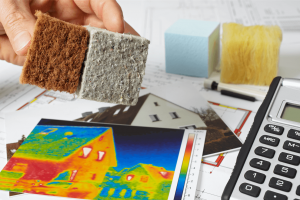SAP Calculations: Our Top Five Tips For Achieving Compliance
SAP Calculations are often a source of frustration for self-builders and developers alike – but they don’t need to be.

Thanks to our years of experience, we’re experts at passing Standard Assessment Procedures, so we’ve put together a list of our top five considerations and tips for achieving compliance so that you can get them right first time, every time.
- Fabric – Most designers will refer to limiting fabric parameters as listed in table 2 of The Building Regulations L1A. This is not only a waste of time and resources, but it will also leave you falling short in terms of fabric calculations. To avoid this, aim for the notional dwelling values as found in Table 4:
Wall – 0.18 w/m2k
Ground Floor – 0.13 w/m2k
Roof – 0.13 w/m2k
Window – 1.4 w/m2k
External Door – 1.0 w/m2k - Thermal Bridging – Thermal bridging exists where there is low thermal insulation between the external and internal faces of a wall, creating a path of least resistance for heat transfer, thus leading to significant heat loss. To avoid this, always implement Accredited Construction Details – this will assist with the fabric calculation and will also improve the air permeability as a result.
- Main Heating – Unless renewable heating technology is being used, always try to aim for a mains gas fired heating system with the following:
Minimum SEDBUK efficiency – 89.5%
Controls – temperature control zones / weather compensator - Secondary Heating (if relevant) – Try to avoid electric and gas as secondary heating systems. If possible, specify a HETAS approved closed wood burning stove. Wood is an excellent renewable energy source for stoves and will therefore significantly improve the calculations.
- Lighting – Make sure you’re using 100% low energy bulbs in order to minimise the building’s energy usage. Interestingly, LEDs require just 10% of the electricity used by CFLs but produce exactly the same amount of light, so use LEDs where possible to maximse energy savings.
Still struggling to achieve compliance? Get in touch with us today for free, impartial advice and how we can help to turn your SAP frustrations into a thing of the past.
 01254 774943
01254 774943  01254 774943
01254 774943 